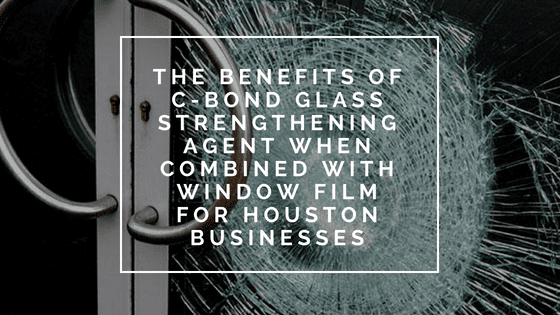Winter may seem like the time of year when solar films are unnecessary, but the opposite is true. In winter, Houston sees the most intense sunshine of the entire year. Especially on southern-facing windows. These windows can become uncomfortably hot in the winter–even on very cold days. Glare is also an issue on these windows, which let in excessive light and UV rays that damage furniture.
Window Film Solutions for Winter Glare and More
The solution to excessive sun and glare through windows, in winter or any time of year, is window film. Solar window films, in particular, are excellent at controlling the sun and conserving energy. Its insulating factors help reduce heat loss through windows, but just how effective it is depends on several factors. The quality of the film, the expertise of the window film installer.
All of the solar films we install are highly effective, and we have decades of experience installing them. Therefore you know when you work with us, you will get the anticipated benefits from your solar window film all year long.
How does Solar Window Film Work?
There are various types of solar window films. We will cover two of them here: Low-E window films and ceramic window films. They are both perfectly suited to stop glare from entering your home and heat from leaving it. The difference in these films is their appearance and the mechanisms they use to curb the sun.
Low-E Solar Window Film in Houston
Low-E window film works by blocking the portion of the sun’s rays called ultraviolet (UV) rays and infrared (IR) radiation. These are the rays that are responsible for most of the heat gain through windows in summer and winter. in a building. They are made from a thin layer of polyester or other polymers coated with a layer of metal. This metal is typically aluminum or titanium. Since metal is reflective, it reflects the UV and IR rays off the surface of glass windows.
The amount of reflection depends on the film’s visible light transmission (VLT). A lower VLT number means more of the sun’s heat is blocked. However, the lower the VLT, the darker the appearance of the tint. Regardless of how much solar heat is reflected, almost all Low-E films still block 99%. The result of applying Low-E films is reduced glare and improved energy efficiency, along with more comfortable interiors.
Ceramic Window Film For Sun Control in Houston
Ceramic window films are similar to Low-E films in the benefits they offer homeowners but different in how they perform the task of sun control. Ceramic films are made from a ceramic coating applied to a thin polyester or polymer film. These films are engineered to keep heat in during the winter by blocking interior heat back from leaving instead of allowing it to escape through the glass.
The ceramic coating on window film helps to stop the conduction of outside heat into home interiors by acting as a barrier. This two-pronged function is best at keeping homes at the perfect temperature in summer or winter. Ceramic films usually have a more subtle appearance than Low-E, but both look lovely on any Houston home. Like Low-E film, ceramic solar films block UV rays, reduce furniture and floor fading, and lower utility bills.
Solar Window Specialist in Houston
We carry the top window film brands for solar control on the market today. All of our installation specialists are trained to help customers make the best window film choices for their individual needs. We are happy to come to your Houston home or business and consult with you free of charge. Reach out to us today to schedule a free appointment!






About The Author: Mike Kinsey
Mike Kinsey is the Operations Manager for the largest and most successful window tinting company in the Houston area. Mike has been cultivating his knowledge of window film products for over 15 years and is familiar with top brands such as LLumar, C-Bond, Solyx, and Vista as well as the latest trends and innovations in security, privacy, and energy efficient technology. Since he started working in the industry, he has overseen the installation of over 250,000 square feet of film for residential and commercial buildings of all types. His impressive portfolio and years of experience make him one of the top professionals in the field and are backed by official certifications from 3M, EnerLogic, and AIA for continuing education.
More posts by Mike Kinsey